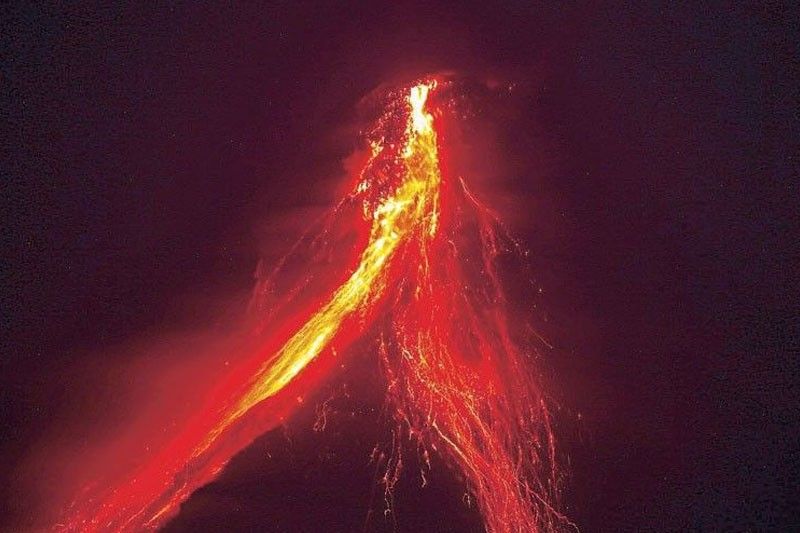‘No need to widen Mayon’s danger zone’

MANILA, Philippines — As lava flows and pyroclasic density currents from the restive Mayon Volcano in Albay continued, an official of the Philippine Institute of Volcanology and Seismology (Phivolcs) yesterday said there is no need yet to widen the current six-kilometer-radius permanent danger zone.
Mariton Bornas, chief of the Phivolcs volcano monitoring and eruption prediction division, said expanding the six-kilometer permanent danger zone is still not an option as pyroclastic density currents were still within the zone.
“Based on our observation this morning, a major portion of the lava dome at the crater collapsed and another lava dome rose,” Bornas said.
She said Mayon’s abnormal activity is expected to continue for three months.
“There is still no sign showing Mayon’s abnormal activity will end sooner. We expect lava flows to continue like what happened in 2006. It will persist for months,” Bornas said.
She said state volcanologists have yet to see any change in the overall monitoring parameters.
“The recorded earthquake is still low as well as the seismic energy of the volcano. There has been no change since June 15 and the measurement of sulfur dioxide, a volcanic gas that causes an explosive eruption, is still low,” Bornas said.
As of 8 a.m. yesterday, Phivolcs data showed that lava flows had advanced to 2,700 meters and 1,300 meters along Mi-isi and Bonga gullies, respectively.
“We are warning the public against entering the six-kilometer permanent danger zone as the direction of the pyroclastic density currents may change any time,” Bornas said.
She said that on Friday, the Phivolcs team monitored major pyroclastic density currents that included hot ashes, rocks and volcanic gas flow.
A “very slow lava flow” is ongoing and at least 397 rockfall events were recorded in the past 24 hours, Phivolcs said. — Cet Dematera
- Latest
- Trending

























